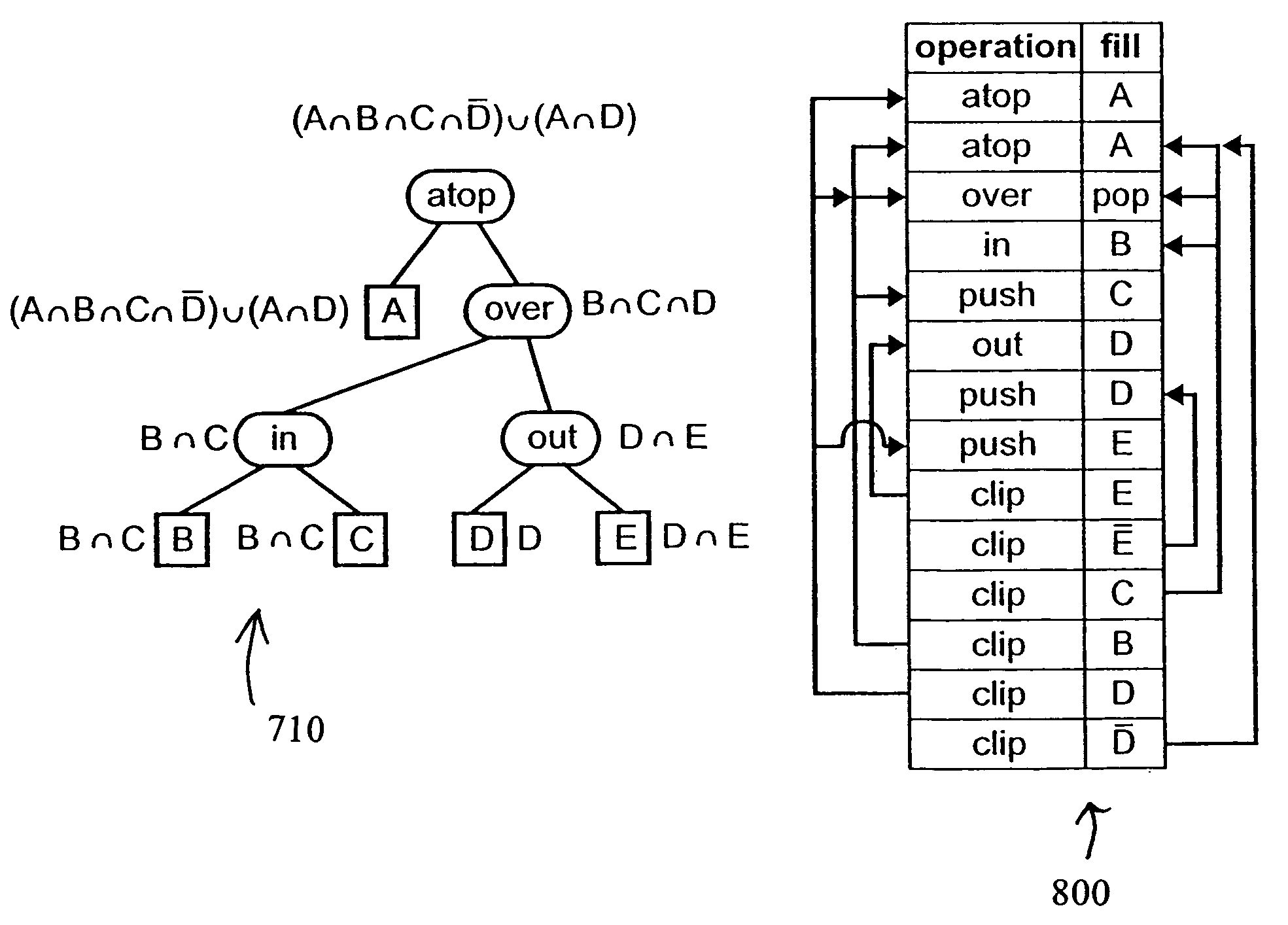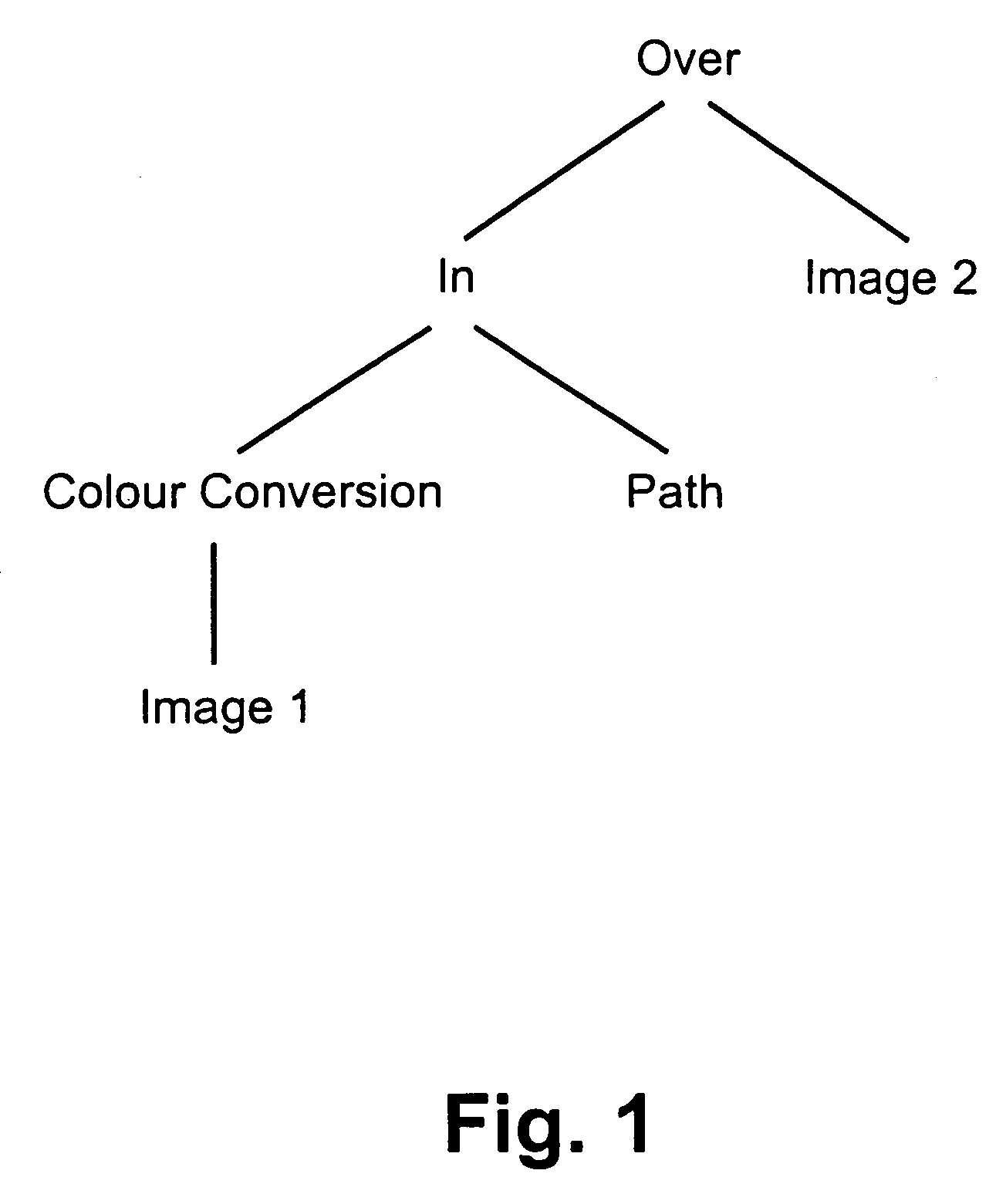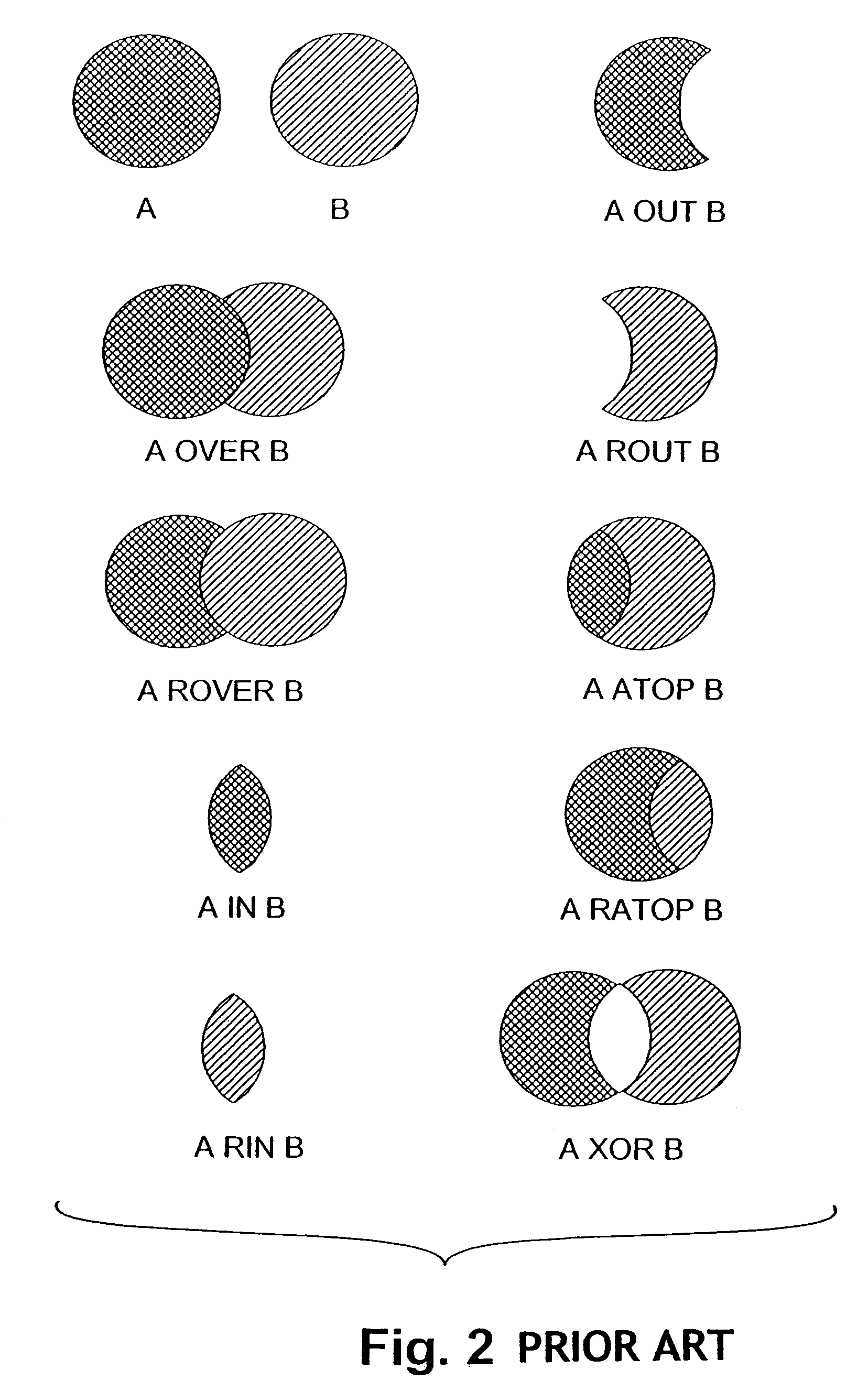Method of compiling compositing expressions for optimised rendering
a compositing expression and expression technology, applied in the field of computer generated images, can solve the problems of simple frame buffer approach not sophisticated enough to render arbitrary expressions, not sure of the true compositing environment, and not enough sophisticated to achieve simple frame buffer approach
- Summary
- Abstract
- Description
- Claims
- Application Information
AI Technical Summary
Benefits of technology
Problems solved by technology
Method used
Image
Examples
example
[0112]As seen in FIG. 3, for a given compositing expression 310 consisting of graphical objects and compositing operations, a natural mapping, obtained by evaluating the expression tree from right to left, produces a level activation table 300 from which the expression can be evaluated. The natural mapping of the level activation table occurs in four stages as follows:[0113]1. Write the expression in Polish notation.[0114]i.e., over over in A B out C D E[0115]2. Combine each operand that is adjacent to a graphic operand to form a level.[0116]i.e., over over (in A) B (out C) D E[0117]3. Replace each remaining graphic with a level that pushes pixels from the graphic onto the stack.[0118]i.e., over over (in A) (push B) (out C) (push D) (push E)[0119]4. Replace each remaining operator with a level that pops its source off the stack.[0120]i.e., (over pop) (over pop) (in A) (push B) (out C) (push D) (push E)
In the example,
[0121]
‘(push X)’denotes a level representing an operation where a c...
PUM
 Login to View More
Login to View More Abstract
Description
Claims
Application Information
 Login to View More
Login to View More - R&D
- Intellectual Property
- Life Sciences
- Materials
- Tech Scout
- Unparalleled Data Quality
- Higher Quality Content
- 60% Fewer Hallucinations
Browse by: Latest US Patents, China's latest patents, Technical Efficacy Thesaurus, Application Domain, Technology Topic, Popular Technical Reports.
© 2025 PatSnap. All rights reserved.Legal|Privacy policy|Modern Slavery Act Transparency Statement|Sitemap|About US| Contact US: help@patsnap.com



